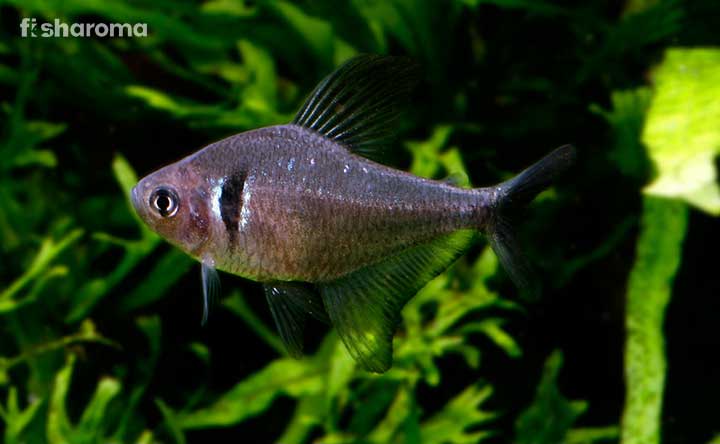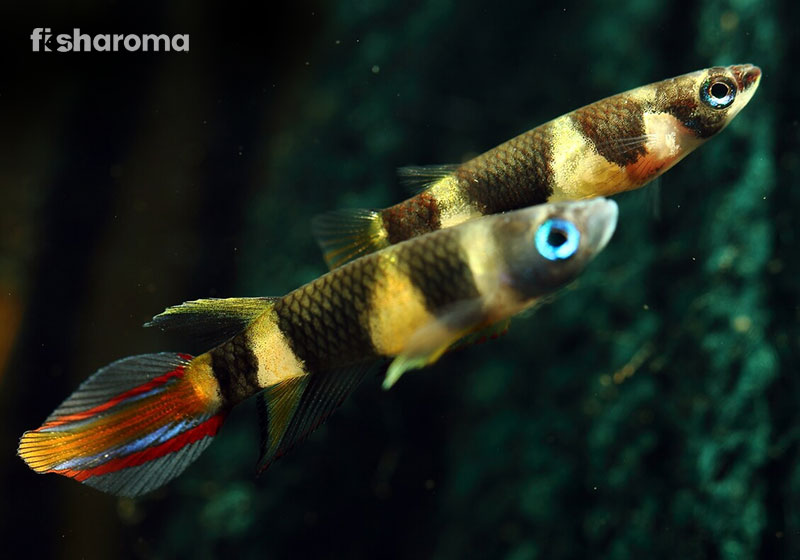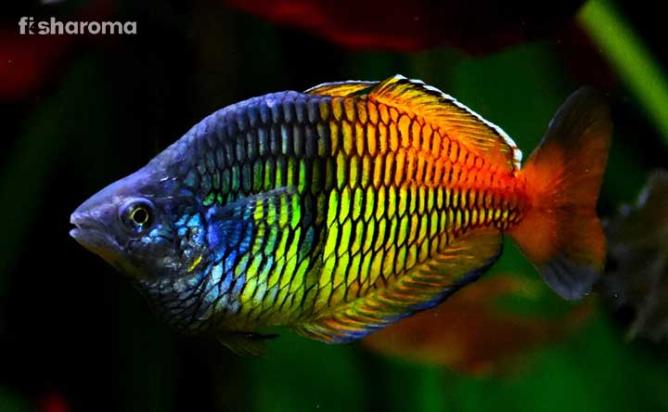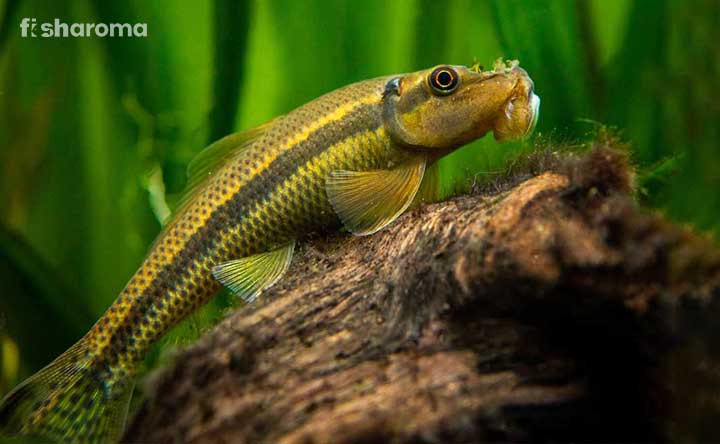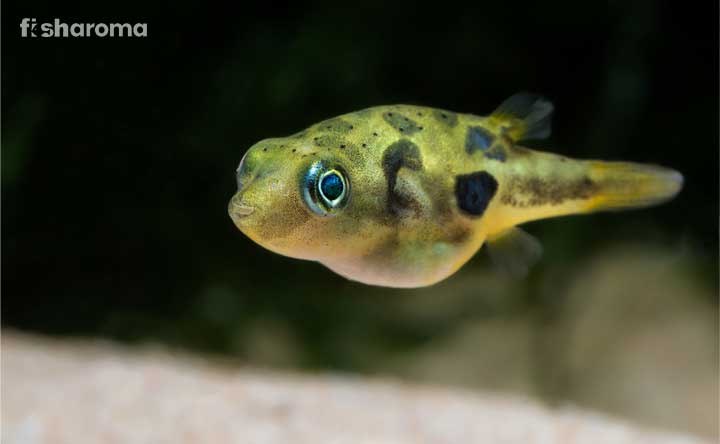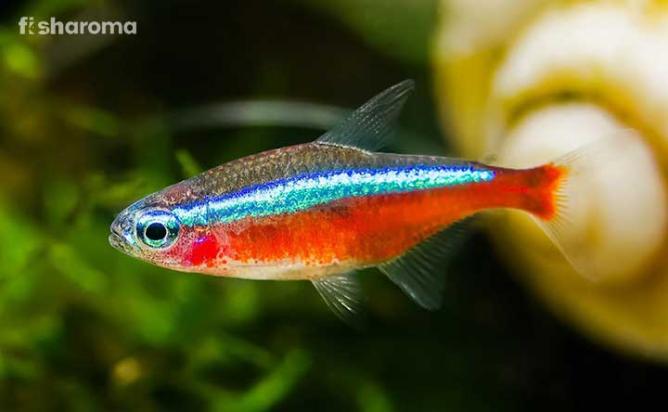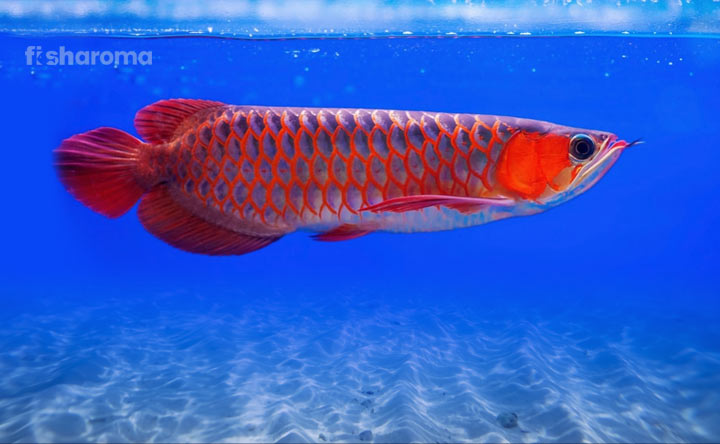Rosy Barb Care Guide: Tank Setup, Diet, Water Type & More
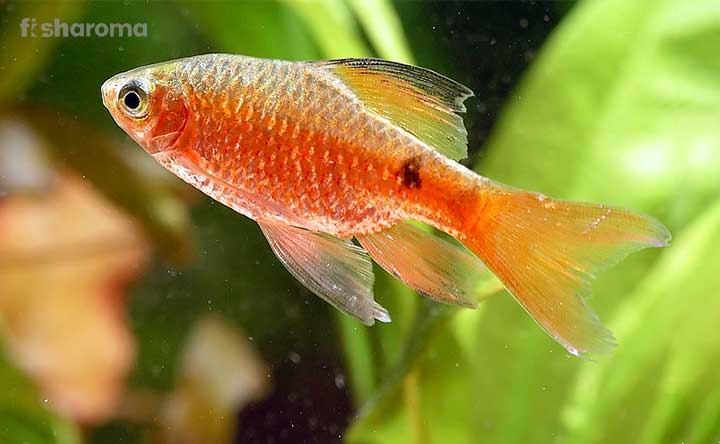
Rosy Barb fishes, with fewer demands in their bags, turn out to be the most perfect pick for your freshwater aquarium. Rosy Barbs belong to the subtropical regions and add to the most colourful part of your aquarium. With their continuous active nature and peaceful habit, these fishes make your tank look a beautiful addition to your home. With amazing pink colour, they can add a pinkish moving hue in your tank when they shoal together.
Rosy Barbs are very hardy in nature and they can stay happily with any veteran or beginner fish-keepers. These omnivorous shoaling species of the Cyprinidae Family are very easy to take care of. Also known as Red Barb, these species have a nature of spawning frequently and this demands for mating in large quantities. Many more interesting features are on the way, so stay till the end to know about these subtle beauties in detail.
Key Specifications of Rosy Barb
Once we dig deep into all the features of these fishes, we will not find it easy to know their key specifications in short and accurate. So, let us go through these specifications!
| Scientific Name | Pethia conchonius |
| Origin | Subtropical lakes of Southern Asia to Afghanistan and also Bangladesh |
| Lifespan | 5 Years |
| Temperament | Peaceful |
| Size | 6 inches |
| Diet | Omnivorous |
| Family | Cyprinidae |
| Compatibility | Any peaceful shoal of fishes |
| Tank Size | 20-30 Gallons |
| Care Level | Easy |
| Colours | Red and pink |
Overview
Rosy Barb is belonging to the most important part of pet-trade, for which many feral populations have developed in different non-native areas. Typically, males are more beautiful and colourful than females, which is why keeping more males in your tank will vibrantly increase the beauty of your aquarium.
With an easy caregiving, Rosy Barb might react differently and can be prone to diseases once they are left neglected or their water quality degrades. It is always better not to rely on the natural hardiness and resistance power of the pet fishes.
Their hardy nature might help them to adapt to any kind of worse conditions of water and environment. However, following basic guidelines for these fishes will help you to avoid any unwanted incident related to your pet Rosy Barb.
Origin and Habitat of Rosy Barb
Native to sub-tropical waters of Southern Asia, Rosy Barbs are not confined to those places only and they cater to many areas of Afghanistan, Bangladesh and India. Owing to different feral populations that are originating from non-native areas, the availability of these fishes is very easy. These populations are easily at one’s reach when searched in countries like Mexico, Singapore and Australia.
These fishes thrive in slightly warmer waters, for which they prefer to dwell within subtropical regions. This particular feature of these fishes must be remembered while they are picked for home tanks. These Rosy Barbs like to swim in fast-flowing rivers, where there is a high oxygen supply. Their natural habitat demands thick vegetation around the water bodies along with debris that would act like shelter to them. This habitat is an important feature since they like to live in the same ambience when kept in a home aquarium.
It is imperative to keep them in shoals, as they feel very secure when kept with other fishes.
Appearance of Rosy Barb
Your Rosy Barb can add to the aquarium’s beauty and colour with their pink hue, and red tint when they are males. These fishes don’t have any distinct variation of markings in their body and are of solid colour.
Rosy Barbs have a wide, flattened body with a distinctive torpedo shape. Their tails are deeply forked, with one dorsal fin and short anal fins. Their oval-shaped body has a little black marking on their fins and sides, however, these marks are different for individual fishes.
They don’t have a distinct adipose fin, but a second dorsal kind of fin just behind the first one. These fishes don’t have any teeth or stomach, though they have rows of gill rakers. Moreover, they have a special vertebral processing, which helps them to have an acute sense of hearing. Their fins are transparent in colour and have a subtle colouring, which is same with that of the body.
Colours
Males come in different vibrant red colours, but females don’t have these bright red colours and they mostly are available in lighter subdued silver or gold colours. Sometimes, they have a black marking on the rear side of their body, almost near the tail. Under too much excitement, the colour of their fins tends to get more vibrant and looks deep red.
Size
The size of these fishes are larger than any other type of Barbs and can easily grow up to six inches. With proper care, they can sustain in this length; though they are a little smaller than the other fishes of the Cyprinidae family like Giant Barbs.
Behaviour of Rosy Barb
These fishes are extremely fond of the schooling community and they feel very safe in the company of other fishes. Since they are very shy, they prefer many fishes of the same species. Otherwise, they become very aggressive and engage themselves in the activity of nipping other fishes’ fins. As you start keeping more fishes, they will become relatively happier than they were when in a small school. Gradually, they will reduce the tendency of nipping and chasing other fishes.
Keeping aside their aggression, when threatened, these fishes generally don’t interact much with other species of fish. They will swim fast and actively within all levels of the aquarium. These small critters are very skilled jumpers and can jump out of the tank, thus hurting themselves.
Lifespan of Rosy Barbs
Rosy Barbs can typically live up to 5 years in captivity if taken proper care of and given a required diet.
Diet of Rosy Barb
Being omnivorous, Rosy Barbs like to have meaty-protein as well as different vegetables in their opportunistic feeding habit. You can feed them with different kinds of live foods, insects, worms and crustaceans. However, these small foods need to be small in size and should get digested in a while.
You can also treat your pet Rosy Barb by providing them with boiled peas or zucchini. Since they are finicky eaters, they will eat whatever and whenever you give them to eat. You need to provide them food that would last hardly two minutes and repeat this process twice a day. Recommended that you don’t overfeed them, and also provide them with the chance to eat hair algae that grow around within aquariums.
Apart from the above-suggested food, you can also provide your Rosy Barb with different dry fish food, brine shrimps, pellets and flakes. Try to provide them with foods that are rich in carotenoids, so that they can easily maintain a bright colouration throughout.
Tank Requirements for Rosy Barb
These peaceful Rosy Barbs are very inquisitive and intricately beautiful as they swim gracefully in the tank. This active swimmers need their tank to be well-decorated, and this demands for different decorative items to keep your fish healthy and happy. The proper tank size, types of substrates and different plants are of high demand for a Rosy Barb tank.
Tank Size
The Rosy Barb prefer to thrive within the shoal, and it is always better to keep them within a small group of the same species. While swimming in school, these fishes need at least a 30-gallon tank. You need to add more or less 5 gallons of water within the tank for each Rosy that you add in the shoal. The more space you provide for them to swim, the more they will remain enriched.
Tank Lid
The tank lid is one of the most important things since these little critters are active jumpers. They might get out of the tank while at play and will hurt themselves. it is always recommended to keep a sturdy lid on the tank, along with a minimum space within the lid and water level. This will also resist the fishes from getting hurt while jumping within the tank.
Tank Lid is also an important factor since dirt might get accumulated within the water if the tank is left open.
Substrates
The Rosy Barb is mainly known for their colouration and this vibrant colour needs a dark substrate to reflect their vibrancy. It might be different types of substrates varying from sand, rocks or even plant substrates.
Ornaments
These Rosy Barbs need driftwood, rocks and crevices to play. They try to intricately exhibit their colouration on the different ornaments added to the tank. Moreover, you need to add a plethora of vegetation in their vicinity for them to explore, so that they don’t get bored.
Filter
The filtration process is very important since, with help of effective filtration, there can be strong purification and current in the water. This will help your fish to swim in the fast waters, and the decent current will also not make them stressed.
While discussing types of filters, we can say that any kind of filter will work well for your Rosy Barbs’ tank. You can use even Hang on Back filters and internal filters so that the output received is more powerful. More powerful filters will produce more water current, and this, in turn, will positively impact the fishes’ health. Basically, it helps in generating more oxygen within the water.
The filter must have a waterfall outlet so that there is continuous oxygen addition to the water. This high oxygen is very important for the Rosy Barbs to dwell happily in the water.
Presence of Flora
The plantation is very important for the Rosy Barbs, as they appreciate hiding among broad-leaved plants. However, live plants are more cherished than any other plastic plantation, since oxygen is generated through live plants. Moreover, you can add different plants like Java Ferns, Java Moss and plants with broad firm leaves. These plants also provide them safe places to hide, when they are kept with other fishes also.
These fishes have a tendency to nip plants’ leaves, which is why soft plant like Hornwort is to be kept.
Lighting
The lighting procedure for your Rosy Barb needs to be like a normal day and night cycle. This, however, does not mean that there must be all day and night lighting; you can establish a day and night period by manually turning these aquarium lights on and off.
Cleaning procedure
Cleaning is very important, as a clean tank will reflect on the long life expectancy of a fish. You need to use a cloth and softly scrub the tank walls and put the tank under a slow-flowing tap to remove dirt from substrates. However, do not over clean the substrates as there is the presence of hairy algae, which acts as food for the fish. Removing them will cause a deficiency of natural nutrients in their diet.
It is recommended that you must not use any bleach or soap while cleaning the tank. The residue of these cleaning materials will keep a long-lasting impact on your fishes’ health.
Water Requirement for Rosy Barb
Water requirement is one of the pivotal factors that needs to be satisfied to its fullest, so that your fish remains hale and hearty. With proper water temperature, pH level and hardness, the fishes can live for prolonged years. Let us peep through all these parameters.
Temperature
Rosy Barbs prefer to dwell in the warmer waters, for which there is a need for a heater as well as a thermometer. These essentials will keep the water warm, and the fishes can live contentedly. However, they can still tolerate a bit cooler temperature, as they are very hardy in nature.
pH Level
The recommended pH level for your Rosy Barb must be 6.5-7.0, with an inclination towards acid content. However, any level, a bit lower or higher than this level is also accepted by the fishes.
Hardness
The hardness of the water must be within 10 dGH, but this species can tolerate any point of hardness within this range.
Minerals
Ammonia, nitrate and nitrite levels are very important for Rosy Barbs to be active within the tank. The ammonia must be kept close to 0 ppm, as this creates a true thriving environment for the Rosy Barbs. Since they are hardy, they can also tolerate a bit high ammonia.
That said, we will discuss the nitrite level, where it must also be kept at 0 ppm; these fishes can also tolerate high nitrite technically. For nitrates also, they can tolerate a high level, however, it is recommended to keep the level at 0 ppm.
While all the above-said parameters match, the Rosy Barbs tend to display a bright colour and active nature within the tank.
Replacement Procedure
While keeping these fishes in proper ambience, you also need to follow the water replacement procedure. It is important to keep the water clean for them to breed and stay jovial. Moreover, you must change the water at least once a week. Some deviations are fine, but proper testing of water parameters and proper change of water is a must.
It is recommended not to remove the whole water at one go, as it might remove all hair algae.The fish would have nothing natural to eat in that case.
Compatibility of Rosy Barb
Rosy Barb is a potentially aggressive and fast swimmer, hence they must be kept with peaceful, short-finned and fast movers. In doing this, there must not be any slow-moving fish, as they would create problems in the swimming pathway of Rosy Barbs. However, they must be kept with their own school within a tank. You can also keep fishes that dwell better in the same temperature just like the Rosy Barbs.
Suitable Tank Mates
You can keep five Rosy Barbs in one school, and it is best to keep them cheerful, safe and active. The other suitable tanks for these fishes are listed below:
- Swordtails
- Gouramis
- Tetras
- Danios
- Cherry Barbs
- Tiger Barbs
- Mollies
For adding a few activities at the lower end of the tank, you can add some Kuhli Loaches and Otocinclus (a type of Catfish). Without getting fearful, you can also add some snails (mainly Nerite) as they won’t disappear from your tank!
Unsuitable Tank Mates
You need to always keep these fishes with short fins, as they are in the habit of nipping away fins. Also avoid keeping any highly aggressive species, like Oscars with your Rosy Barbs.
Breeding of Rosy Barb
Breeding these fishes is moderately easy, and as they grow up to 2.5 inches they become sexually matured. While you think of breeding your fishes, you must provide a 30-gallon tank. It is recommended that you keep them in a breeding-specialised tank, where all the parameters are maintained accurately. You must keep the water clean with an optimal temperature of 22 Degrees Celsius.
For every single male, you must keep two females during breeding. These fishes tend to breed in a few inches in deep water, where after spawning the space becomes very congested. You must remove the fries into a larger tank so that they don’t get stunted. While breeding, the female fishes become extremely bright in colour, and they will start courting, while they continuously move around in the tank. Once eggs fertilise, the mother will scatter these eggs around the plants.
After 36 hours, these adhesive eggs hatch and fries come out in the water. This is the time when you must remove them, as the parents are opportunistic eaters. They never back down from even eating away their fries. The fries need to be fed with infusoria, which is a liquid fry food and baby brine shrimps.
Diseases and Treatment of Rosy Barb
Diseases and illness are a threat to any living being with a weak immune system, as they are not superior in killing pathogens. Though very hardy, these fishes might catch a few diseases like Ich. This is also called White Spot Disease and can simultaneously impact a different species if that fish is kept with the infected fish. This is caused by an ectoparasite that develops differently-shaped white spots on the skin of the fish.
The best thing is that this disease is easily treatable, and can be cured with a few normal medicines. These fishes are able to handle any kind of copper-based medicines, which are able to treat Ich properly.
Summary
These Rosy Barbs are a perfect pick for your home aquarium, as they are truly cost-effective and can add bright colour to your tank. Being one of the hardiest Barb types, these fishes are able to tolerate any kind of cycling in a new tank. The moment they swim in school, it is a moment to behold and appreciate. With a bright vibrancy, they create the underwater glow in the tank.
However, you must look after your Rosy Barb like you do for other fishes also. Don’t take their hardiness for granted, as this might result in a negative impact.
Care Guide for Similar Pets
If you have found our article to be truly helpful for guiding you to look after your fish, you can certainly go through the following links.
- Care Guide to Peacock Cichlid: You want to add these species in your freshwater home aquarium? Keep reading our blog to keep yourself updated on their habits.
- Care Guide to Scarlet Badis: Isn’t it amazing if your pet fish keeps changing colour depending on their moods? Here is one you can follow!
- Care Guide to Yoyo Loach: Entire day some pet fishes are bouncing in your aquarium and showing their playful nature to you. Don’t you want to keep them in stock? Read our article to know about their caring procedure.


